- ULUS Protest Autumn Exhibition
TÂJNĀ ZNÁNJA
The Secret (of) Knowledge
Film ⇆ Photography ⇆ Painting
Awards statement of the jury represented by member of the artistic council Danijel Glid, member of the management board Vladan Jeremić, and artist-curator, art theorist, and critic Elisabetta Cuccaro.
The 86th autumn exhibition TÂJNĀ ZNÁNJA: The Secret (of) Knowledge. Film ⇆ Photography ⇆ Painting was entrusted to international curators gathered around the platform PhD In One Night – for aesthetic experimentation and education for all -, within the Radical Peace Laboratory (research center and artistic residencies at the Orangeries de Bierbais). The platform, represented by Ivana Momčilović, Kaya Erdinç, and Elisabetta Cuccaro, worked in cooperation with Edition Yugoslavia and the Ulus Art Council.
Marked by the spirit of protest for the Pavilion, the exhibition has brought together artists from territories where there is limited peace, but also those affected by the cruelty of current wars. It explores the secret connections and inspirations between the art forms of film, photography, and painting, through the lens of indisciplinarity and the display of deliberate and accidental crossing references between territories of human thoughts and practices.
This year’s process of selection and nomination has followed the exhibition’s postulate: that indisciplinary migrations hold the capacity to connect territories of knowledge/knowing that at first glance seem distant, but which can be integrated through amateur practices that acknowledge the porosity of the lover, and not the programmatic ethos of the professional. Upholding the exhibition’s values – those of indisciplinarity, love, emancipation, equality, and peace – and believing and working with the concept of collective intelligence, the jury decided to deviate from the traditional view of what is conventionally considered a prize or award.
This decision aligns with several convictions, also expressed by the exhibition’s intention of contributing to “changing the dominant system through micro reconfigurations and transformations, above all by shaking the widespread and prevailing concept of expertise, expert knowledge, and narrow hyper-specializations” all structures that, unfortunately, form the basis of the dominant view on our current society as competitive and individualistic.
Taking a distance from this understanding, the jury shares the belief in art as an ability inherent in everyone: „Poetry will be written by all and not by One“ as the young poet Isidor Lucien Ducasse, called Lautréamont, once said, and yugoslav poet Branko Miljković iterated. True to this belief, art as such a capacity is in itself a prize that belongs to all, with no competition or winner.
However, not wanting to completely destabilize the ULUS tradition by awarding well-deserved awards to everyone (laughs), the jury’s deliberations resulted in the determination of multiple winners, a total of four awarded artists, and two special awards. The following key aspects have been considered:
We considered the following key aspects:
- Endorsement of the exhibition’s duality of invited and selected artists
- The core interplay between expertise and amateurism
- The value engendered by internationality and intergenerational connections
- Artwork’s role within the exhibition’s system
The awards have redesigned the original cash prize of cca € 130,- (cca 15000 dinars), and the possibility of having a solo exhibition in ULUS gallery venue – IZLAGAČKI PROSTOR – GALERIJA ULUS. The winners’ nomination should be seen as a symbolic act of the jury’s gratitude for the artist’s contribution to a world that values diversity and social engagement, and that embraces peace as an act of radical immanence, within everyone’s reach.
Following are the names of the “winners”:
- Ksenija Pantelić
as the national professional artist selected from ULUS open call
- Taysir Batniji
as the international professional artist invited by the curatorial team
- Marinela Neralić
as the artist sensible to amateurism, experimentation and indisciplinary articulation from ULUS open call
- Boško Atanacković
artist/researcher whose work travelled through different generations selected from ULUS open call
*Ksenija Pantelić is awarded the cash prize of 15000 dinars.
*Batniji is awarded an artist-in-residency prize at Laboratory For Radical Peace in Les Orangeries de Bierbais, offered by PhD in One Night.
*The four mentioned artists are awarded a group exhibition in the ULUS gallery, at Knez Mihailova Street 37, in Belgrade, in 2024.
(More specific details about the awards will be further discussed between the ULUS board, the curatorial team, and the winners.)
Here follow individual motivations for the selection.
Ksenija Pantelić
Red Carpet renders tangible the dimension of cinema as an ideological apparatus of society, whose values are embodied in a few recognizable elements, such as the “red carpet”. The work functions as a critique by contrasting the glamour of the world of stars (cinema or art) with the modest domesticity of knitted wool. From a symbol of the world of distant and inaccessible stardom, Red Carpet becomes an ongoing existential practice (a secret knowledge) whose material and temporal dimensions reject the values derived by the division and specialization of fields, objects, and methods (expertise), also including the separation between types of humans (or intelligences), assuming equality. The use of wool strongly resonates, in the specific condition of the exhibition, with the ongoing protest for the maintenance and renovation of the pavilion: in the coldness of winter, the woolen red carpet reminds the warmth and comfort of a huge hand-made scarf, an everyday attempt to protect and get warm. The equality between humans, no matter their status or life situations, is also present in the works of the associations she collaborates with (visuals for the magazine Lice Ulice, for and of people without permanent residence). and in the artist’s own words: I hope that we will begin to put the idea of a healthier, more humane, and noble future for all of us ahead of the self-centered and hectic race for prestige and money.
Taysir Batniji
His video works Gaza Diary and Home Away from Home, Najia & Ahmed have been the fulcrum around which the other works of the exhibition have acquired a depth of meaning and given a necessary contextualization for visitors about the current situation and the incomprehensible reality of the pogrom of the people of Palestine. In the voice and the images departing from the central area of the pavilion, Batniji’s poetic and civic voice reverberates and reiterates a compelling call for peace and equality. In these dramatic times, his videos – dated 2001 and 2017 – assume an added urgency and face us with the necessity to consider human life first and foremost. There are no civil rights (as Taysir strongly presented by carving them on pieces of soap in the work titled No Condition is Permanent, one of his most famous works), but rather obligations toward human beings, as Simone Weil (1909 – 1943) once said: “Whoever has his attention and love actually turned toward reality (…) recognizes at the same time that he is bound, in public and private life, to the perennial and exclusive obligation to remedy, within the limits of his responsibilities and as far as is in his power, all deprivations of soul and body capable of destroying or mutilating the earthly life of any human being. (…) The criterion for recognizing that the needs of human beings are met is the flourishing of fraternity, joy, beauty, and happiness. Where there is withdrawal into oneself, sadness, ugliness, then there are deprivations to be healed”. These two works are a testament to the “bad infinity” of the Palestinian situation that has not changed since the creation of these works (2001 and 2017) and because of the immediate destruction of the last traces of an enclave and its inhabitants, they now become a kind of precious archive of a disappearing city and region. Gaza Diary and Home Away from Home touch the viewer with delicate empathy, and the moving capacity to show with nostalgic ordinariness the universal yearning for home and peace.
Marinela Neralić
With Samoća i ljeto, Neralić has created a work where one feels that it is a diary by a true ciné-amateur, tuning into the enthusiasms of the few female authors who preceded her in the history of Kino Klub Zagreb, and interlacing it with the intimate fabrications of her own life. It is very clear that her sense of colour and collage comes from creating playful arrangements, originating from her day job, perhaps? And this made the jury wonder already when they first saw her actors: does she work with children? She could have kept this film completely for herself, which would have been just as artistically legitimate. But by sharing this work in a wider context, it is evident that she has a capacity for playful experimentation that honours the Yugoslav Kino Klub tradition in a way that allows us to imagine how profusely amateur filmmaking can inform one’s orientation. As one of the jury members noted: if it’s not about the best work, and also not the work that experiments “best“, then it can only be about the freest experiment that one can personally recognise? And also something that escapes esthetical habits of judgment informed by art-historical references. And last but not least, her willingness and determination to participate in a show in Belgrade shows a loyalty to an esthetical-political tradition from Yugoslavia that no other submission expresses as directly and which was one of the guidelines of this exhibition.
Boško Atanacković
His work elevated the exhibition’s thematic section Secret Knowledge, as well as it was uplifted by the exhibition display. His triptych KONSTRUKCIJA 5 – KONSTRUKCIJA 6 – Skakavac 2 embodied with freshness and wisdom the dialogue between technique and nature, connecting territories of knowledge – engineering and painting – seemingly antithetical, but, eventually, in close and porous proximity. The technical language of geometry and analysis has secret reverberations in the expressivity and sensuousness of painting. As one of the oldest active members of ULUS, his presence brings richness to reading a system of multiple artistic practices otherwise unthinkable in an exhibition without generational diversity. Presenting for the exhibition two abstract paintings as well as a technical plan for a just-patented airplane, we could imagine that Boško’s part in the announced award-winning collective exhibition will contain an outdoor ride, so we ask Boško to inform us when that happens.
Special awards
As active, devoted, and faithful participants of the exhibition, but outside of the participating artists’ scope, it has been decided to add two extra awards, for the commitment and dedication the following people have continuously shown. Both of them have been tireless supporters, resonating with the messages fostered by the exhibition:
- Anja Jocić
final year art history student, Faculty of Philosophy in Belgrade
- Viktor Cvejić
student of the Department of New Media, Faculty of Fine Arts in Belgrade
*Both are awarded with an artist-in-residency prize at Les Orangeries de Bierbais, an invitation by PhD in One Night.
In the name of the Laboratory for Radical Peace, the most recent initiative by PhD in One Night, as well as the crossroad where the curatorial team’s members have eventually found each other, the jury wishes all of us to actively work on radical peace, transforming nouns into verbs, names into actions: peace as a driving force that fills every single gesture, followed by many more new verbs such as equality, emancipation, cosmic justice, universality and free experimentation for all.
In that name, let’s not forget – the pavilion is ours!
Thanks to all!
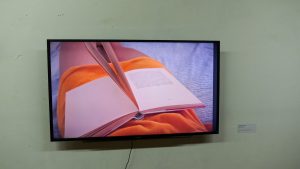
Marinela Neralić, Samoća i ljeto, 2023
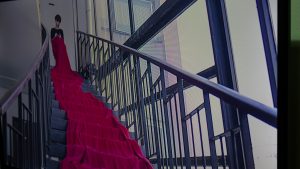
Ksenija Pantelić / Nada Kostić (video/fotografija), Crveni tepih 2009
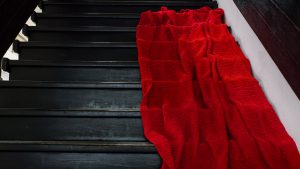
Ksenija Pantelić, Crveni tepih 2009, instalacija
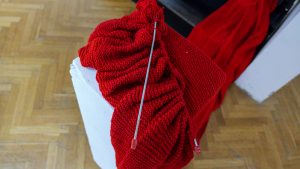
Ksenija Pantelić, Crveni tepih 2009, instalacija
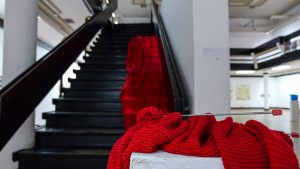
Ksenija Pantelić, Crveni tepih 2009, instalacija
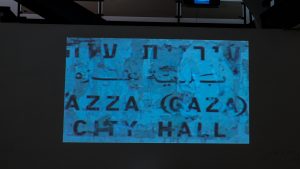
Taysir Batniji, Gaza – diary, 2001
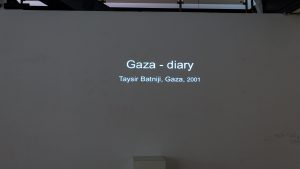
Taysir Batniji, Gaza – diary, 2001
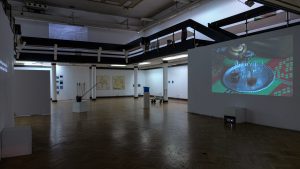
Taysir Batniji, Gaza – diary, 2001
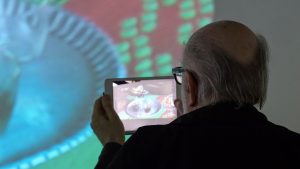
Taysir Batniji, Gaza – diary, 2001
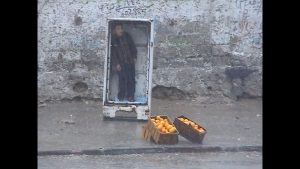
Taysir Batniji, Gaza – diary, 2001
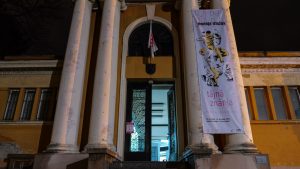
Umetnicki_paviljon_Cvijeta_Zuzoric